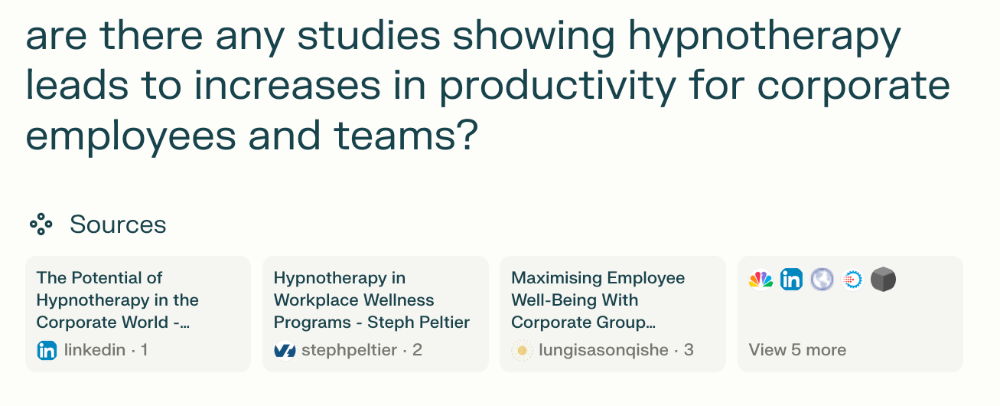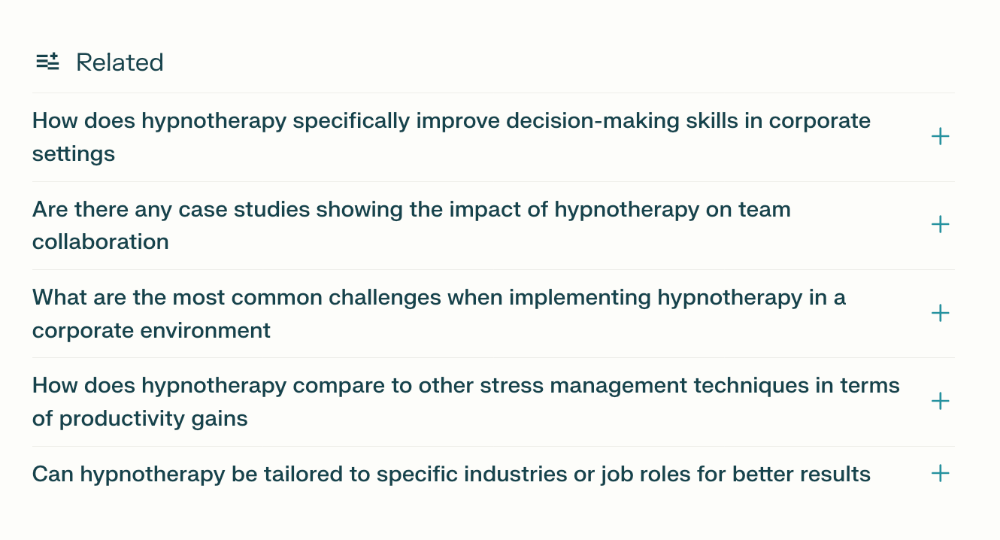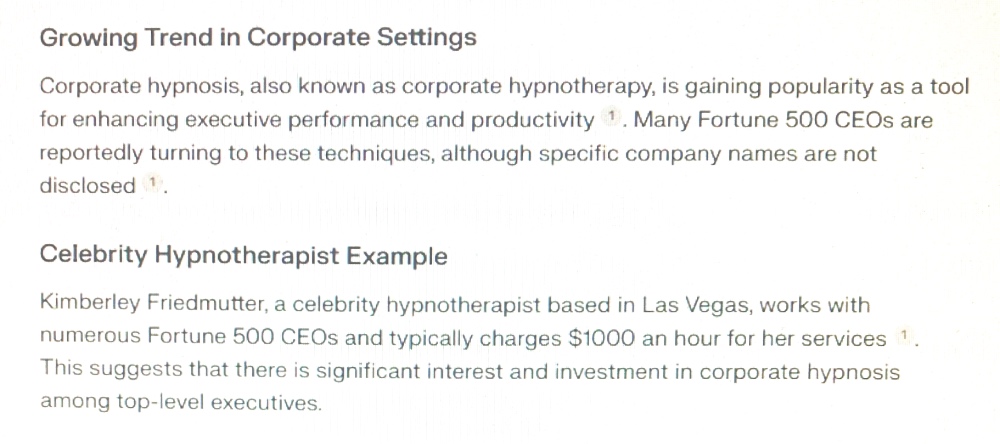
The the biggest obstacle to maxing-out the impact of AI is knowing exactly what you want it to do. And making sure what you ask gets you closer to the ideal result you want.
If you mess this up at the start, there’s a good chance you will end up as stuck and confused as when you started.
Which leads me to announcing the winner for our first ever “One prompt to rule them all contest.”
When I launched the contest I expected to receive requests that could be easily solved with a simple prompt. But surprise! That wasn’t what happened at all.
Instead, most challenges involved far more encompassing strategic problems.
So instead of “I need 40 viral ideas for social media posts addressing the health challenges of midlife women” I got things along the line of, “My clients don’t understand what I do (even though it works) so I need a way to talk to them. And oh, by the way, I need to be able to find more of them that can afford me.”
Or requests that required more market research because they needed deeper insigshts into the desires of their clients they were trying to satisfy.
The good news is that there are two ways AI can help you solve more sweeping strategic questions like these.
1. Treating AI as a Coach or Mentor
Where you aren’t looking for it to give you a one-shot answer.
But having it engage you with have a back and forth (just like you would with a coach) so you can receive multiple answers to your multiple challenges. And receive a more solid strategy foundation that makes everything easier moving forward.
If you didn’t know you could do that with an AI – you can.
2. Treating AI as your Research Assistant
Which helps you gather far more accurate details – from the problems your clients want sovled, to the outcomes they’re willing to pay for, to the langauge that moves them to buy. So you can ask more specific focused questions that give you pinpoint answers.
Which brings us to announcing our winner …
It’s Cheryl Gregory of CherylGregory.com. She empowers her clients to achieve peak performance at work and in life, by giving them the tools they need to Master the Art of Human Connection.
Cheryl’s big challenge is moving her current successful business into the corporate realm, where she will work with higher level leaders and executives, with more responsibility over larger teams and more substantial revenue goals.
It’s a big step for anyone, and – as a I mentioned in the intro – lends itself to a wider strategic approach, than a single prompt can deliver. In her words, she wants to:
“Find high paying clients for my Clinical Hypnotherapy practice. The #1 problem today is about stress/anxiety. I want to focus on guiding leaders and their teams to successful management of stress and anxiety, so everyone can be their best selves at work and in their lives. The problem is that many people fear hypnotherapy, thinking they will lose control or be made to do something they don’t want to do.”
She is looking for leaders who want to connect with their employees, demonstrate the behaviors that represent good leadership and qualities they want employees to adopt, so they can create a culture of safety, collaboration and calm alertness, and still be productive.
The goal? I want them to identify with my marketing messages, thinking “Yes! That’s for me. I need to call her.”
Which is a great start.
And why my recommended response was a more strategic approach. Rather than jumping straight to a messaging prompt.
Because I sensed that Cheryl was trying to apply positioning from her current practice to the corporate arena. And the two markets speak two completely different languages.
When the leader of a smaller company doesn’t produce, they try something different. You have probably experienced this yourself with your business.
When the CEO, exec or a manager of a corporation doesn’t produce they get replaced.
Which is why messaging for larger corporations is almost always bottom-line oriented: Because their very survival is at stake.
So before I could give Cheryl guidance and the messaging that would make corporations want to hire her, I had to connect her more closely with concerns and desires her ideal market was actually experiencing.
Instead of the ones she thought they were experiencing.
SO WHAT WAS THE SOLUTION?
What she needed was not the worlds to convince them of the value of hypnosis. Or to get them over their fears. But to connect at a deeper level with where they were coming from, addressing the problems they are already having and the results they are already looking for with messaging they are already receptive to.
So she’s giving them a way for them to have what they ALREADY WANT … FASTER.
The method for her to connect with those outcomes and messaging was using AI as her Research Assistant.
And the tool I decided to go with was Perplexity.ai.
Sure you can use ChatGPT for research.
What I like about Perplexity is:
1. Is it seems to have deeper insight into what I’m asking for.
2. It organizes its response in a format that’s easier to understand.
3. It lists references where it found the information, so you can investigate further.

4. It gives me a fascinating list of additional suggested questions I can ask on to dive deeper.
It’s this final advantage that makes Perplexity the gift that keeps on giving.

So how did I decide what questions to ask?
My goals were:
1. Was there any research that showed the effectiveness of hypnosis inside corporations? Its always easier to close a sale on something with a track record, then asking the prospect to take a chance on something they may not trust.
2. Is there a record of major companies that have successfully used hypnosis or hypnotherapy with their executive teams and leadership?
3. Are there any Fortune 500 CEOs that have endorsed hypnosis?
4. How to address resistance from executives that see hynosis as exotic?
5. Uncover marketing angles that can be used to enroll corporations.
If we could drill down deeper and get some solid answers in these areas, Cheryl is going to be a lot closer to booking her first major corporate clients. Because its going to give her a ton of raw material from which to craft extremely persuasive possibilities.
So what 5 questions did I ask Perplexity?
1.
Are there any studies showing hypnotherapy leads to increased productivity for corporate employees and teams?
2.
Which major companies have used hypnosis or hypnotherapy with their executive teams and leadership to increase productivity?
3.
Which Fortune 500 CEOs have publicly endorsed corporate hypnosis?
4.
What are 5 successful marketing and messaging angles hypnotherapists have used to interest large corporations in corporate hypnosis services and programs?
5.
How do hypnotherapists address potential resistance from executives towards hypnosis?
.
While not all the answers were home runs, Perplexity provided a cascade of insights that are going to make Cheryl’s road ahead a lot easier and more lucrative once she enters these questions into Perplexity to see for herself.
While the responses weren’t quick and tidy, the sheer magnitude of possibilities puts her in charge of crafting a compelling strategy from a position of strength and confidence.
Here are a few of the most powerful insights:
- The results repeatedly used the term “corporate hypnosis” and not “hypnotherapy”, which seems to be the terminology corporations prefer. Yes different words that describe the same thing matter. Would you rather eat snails? Or escargot?
- There were several studies quoted on the effectiveness of corporate hypnosis which listed specific percentages of improvement that may prove valuable in her messaging.
- While the responses mentioned more studies needed to be done, a few of them positioned this as an advantage, pointing to corporate hypnosis as a growing trend that is starting to catch on. Offering an early mover advantage to those who jump in.

- When I asked “Which Fortune 500 Companies have used corporate hypnosis?” the answers included Volvo, The New York Yankees (not a Fortune 500, but prestigious and definitely performance based), Wellcare Health Plans and Fiserv.
- The responses did a great job of relating more abstract benefits to bottom line outcomes: “Improve employee resilience, resulting in … reduced burnout rates.”
- They used sexy corporate-friendly buzz phrases like “emotional intelligence” and “enhance executive performance and productivity” in the benefit language.
- Repeatedly included “performance enhancement, leadership skills, and creativity and innovation” in the results – all high-impact positioning that can help attract the attention of corporate decision makers.
.
Cheryl will be able to do a deeper dive when she enters the five recommended questions listed above into Perplexity herself.
But there is a ton for her to explore and discover when she does this.
Including some eye-opening articles and sources that are referenced in each response. As well as powerful suggested searches listed below each response.
Additional Discoveries:
HOT TIP 1:
If you’re not getting the results you want, wait a few days and try again.
The first time I asked Perplexity for specific Fortune 500 companies that used corporate hypnosis, it didn’t offer any specific names. The second time I searched a few days later I got the names I mentioned above.
HOT TIP 2:
As always, verify any specifics it gives you to guard against hallucinations, errors in attribution or sketchy sources.
So … was this demo helpful?
Did you discover how to use AI in different ways to deal with different challenges? Did you experience your own a-ha’s on how you can use AI in the future?
And would you like me to run the contest again to get some insights that could help you business?
Drop a comment below and let me know!

Thank you, Rob, for this excellent demonstration. I also used it to help me identify companies that have done studies and have incorporated relationship-building strategies with internal customers (employees) in their organizations and the results.
I mirrored your prompts for Cheryl, adjusted the topic, and got great results. The power is definitely in the prompts.
Congratulations, Cheryl, and Thank You again, Rob!
Boom! That’s the power of an example: Even if the specifics of the person in the example are different than yours, you can still use the steps they took to generate your own powerful results. Love that this worked for you Yvonne!
I want to express my gratitude to you, Rob, for all your guidance and support in this contest. I feel I can jump into ai with a greater command of the “prompt” language to find what I need to find so I can move forward more strategically.
Thank you!
Fantastic Cheryl! So glad this will support your growth into this new chapter in your business.
AI labeled our research assistant. Humanizing the technology to make it a productive tool. Great concept and post, Rob. You proved that the right prompts/questions lead to answers rich in seed and source materials that get us on the right track in our messaging and marketing. I loved how a few days’ wait resulted in more explicit answers. Thank you!
Exactly Barbara! While specific prompts (Give me 10 awesome subject lines / create my Facebook posts for the next 10 days) are great – they’re still nibbling at the edges.
As people really start diving into AI, they will want answers to bigger strategic questions. That have an impact across a wider range of your entire business.
And impact profitability in a much more profound way.
And for those who are interested in that, this post demonstrates one way you can do this.